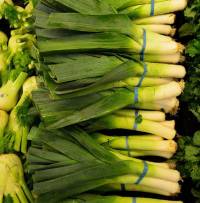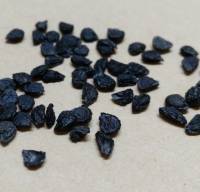Leek
| Botanical Information |
| Order | Asparagales |
| Family | Amaryllidaceae |
| Genus | Allium |
| Common Name | Leek |
| Species | A. ampeloprasum |
Maturity days
Planting Months
| Planting months |
| Jan | Feb | Mar | Apr | May | Jun | Jul | Aug | Sep | Oct | Nov | Dec |
| | | | X | X | X | | | | | | |
Permaculture uses
| Permaculture uses |
| Usage 1 | Usage 2 | Usage 3 |
| | | Vegetable |
| Growing Condition | Comment |
| Drought Tolerant | |
| Humidity tolerant | |
| Planting area | Wicking_bed |
| Sunlight | Full_sun |
Photos
Produces a long cylinder of bundled leaf sheaths.
Space plants: 10 - 20 cm apart Compatible with (can grow beside): Carrots A member of the onion family. Looks rather like a large scallion or spring onion Grow in seed trays or punnets until about 20cm (8in) tall. They look rather like large blades of grass at that stage. Then plant out into trenches or individual deep holes. The aim is to blanch the stems while the plants are growing. Trenches should be about 20-25cm (8-10in) deep. Set the seedlings 10-15 cm (4 - 6in) apart then add enough soil to just cover the roots. As the plants grow fill the trench. Otherwise - make holes with a dibble or suitable stick 15 cm (6 in) deep and 3-4 cm (1.5 - 2 in) wide. Drop a seedling in each and water enough to cover the roots with soil. As they grow, watering will gradually fill the hole. Leeks prefer moist clay soils. Keep soil moist and loose, mulch will help. Trim off the roots and any damaged leaves. Young ones can be used whole with some of the green leaves Wash thoroughly as the earth tends to get inside. Chop and fry in butter (or olive oil) until tender. Can be added to casserole meals, allowing time to cook through. Leek and mushroom make a tasty combination for a tart filling.

